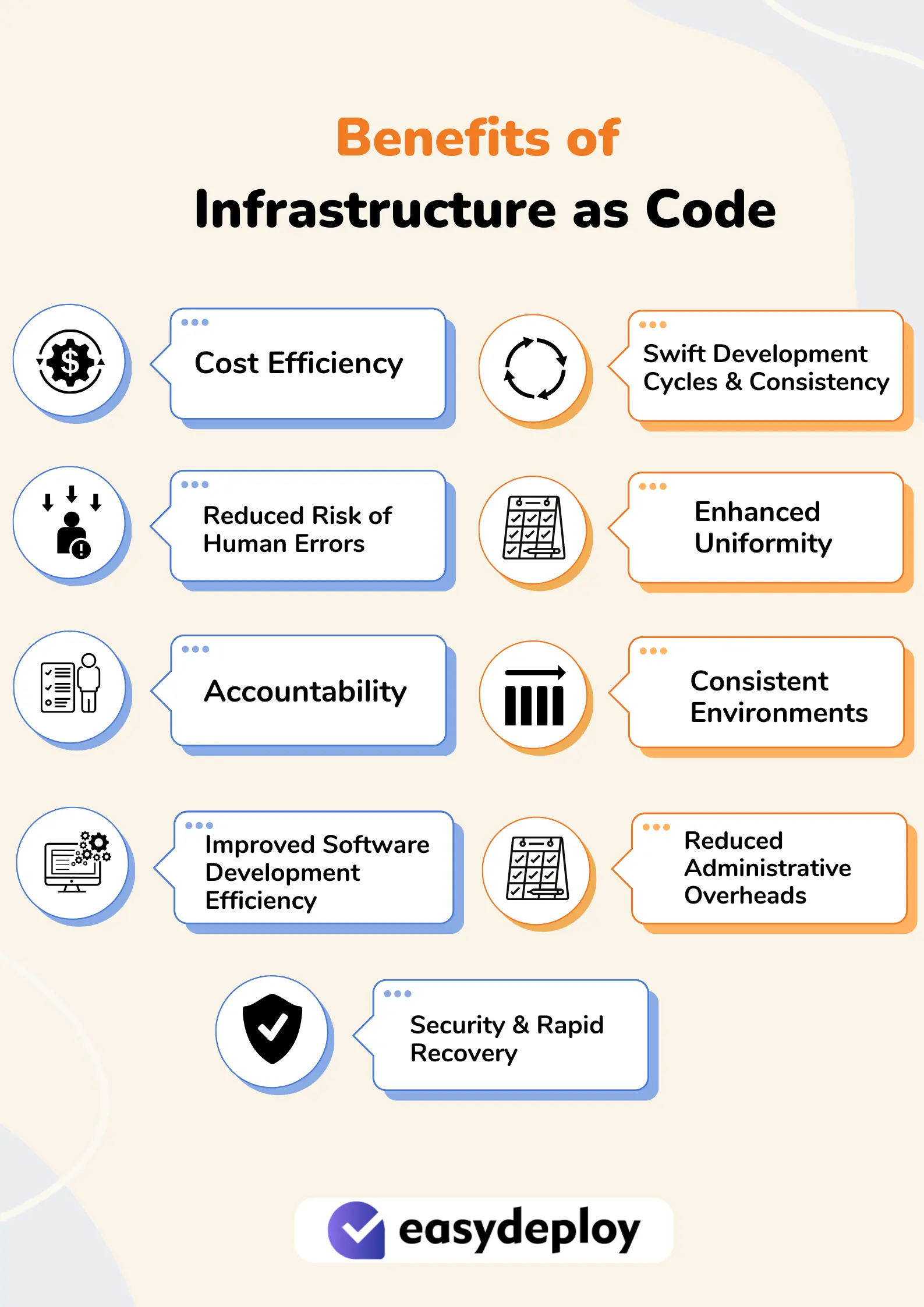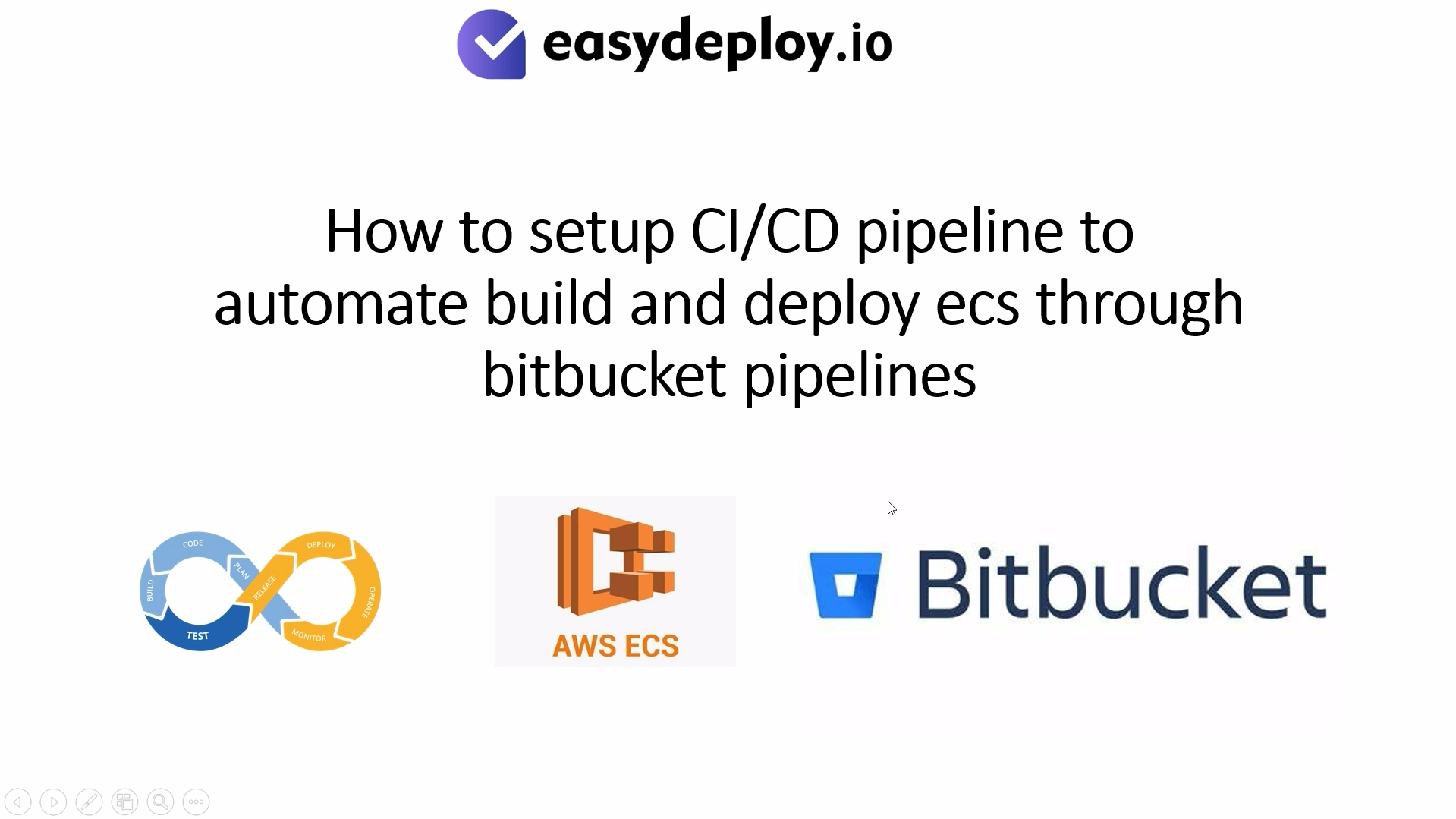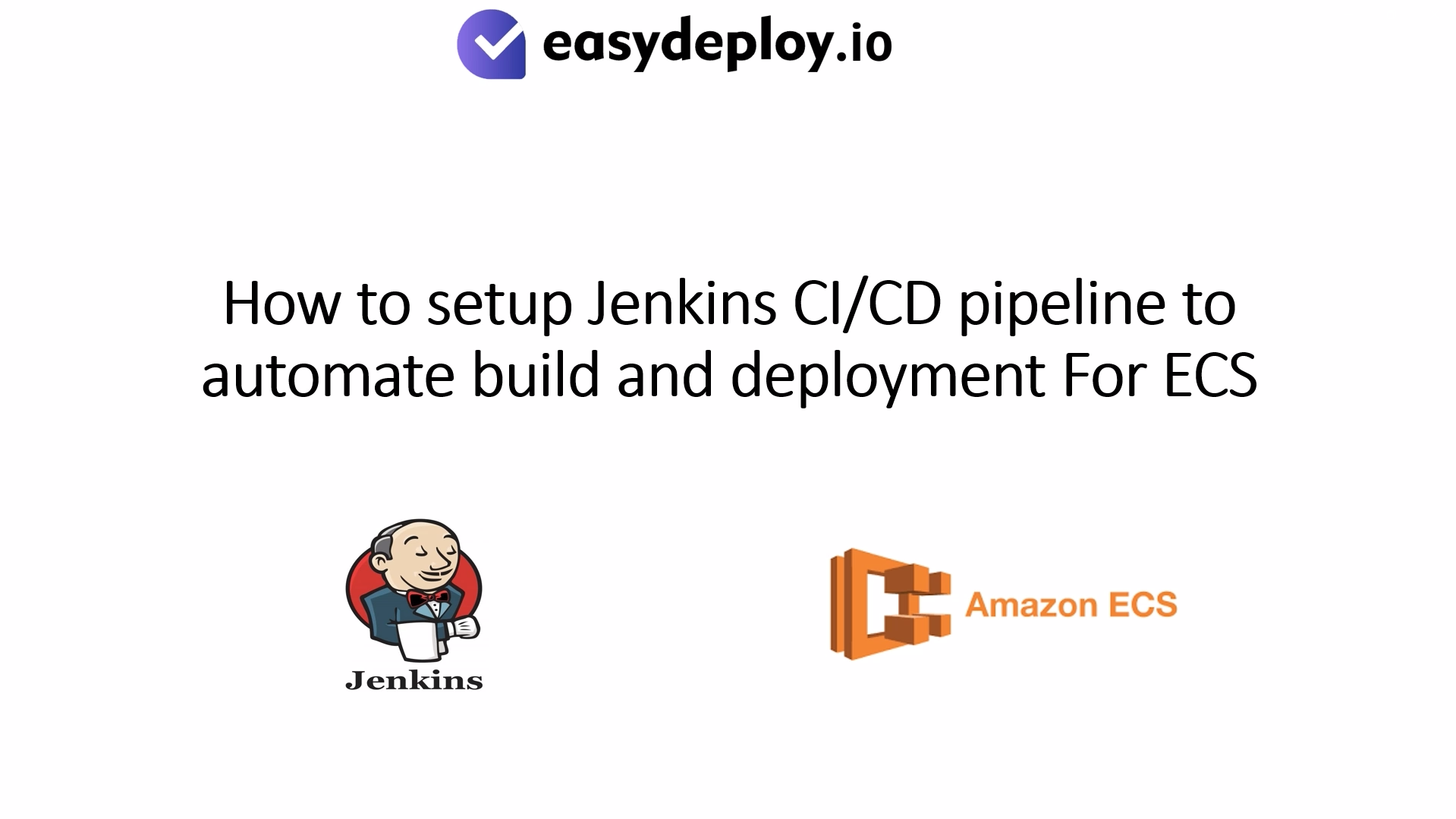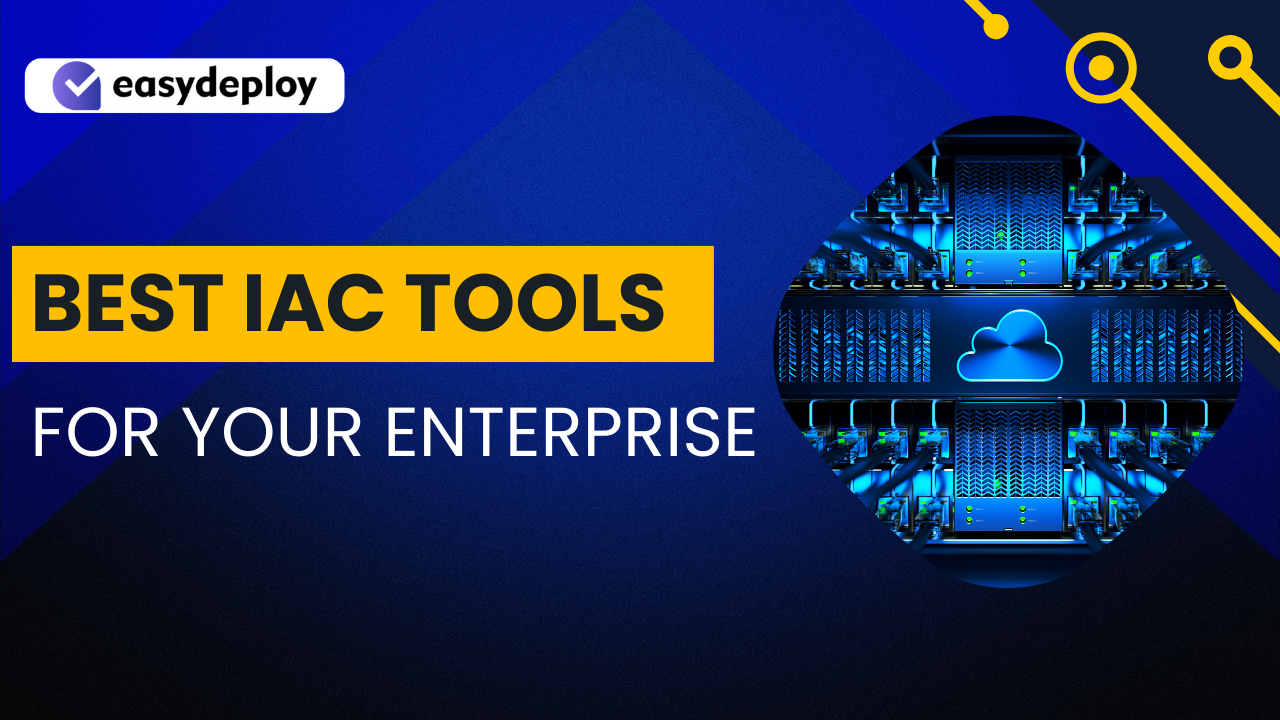Infrastructure as Code (IaC service) is becoming increasingly important for the success of cloud strategies. It allows teams to manage cloud infrastructures more efficiently, especially with the growing adoption of cloud-native applications.
Organizations are turning to IaC Service to codify their cloud assets, including elements like Kubernetes clusters, IAM, S3 storage, and more, using tools like Terraform.
In this blog, we will delve into the advantages, obstacles, and recommended practices of Infrastructure as Code.
What is IaC service?
IaC Service automates the infrastructure provisioning and scaling of infrastructure, ensuring that resources are only allocated when needed and idle resources are eliminated. This dynamic resource allocation minimizes wastage and reduces infrastructure overheads.
Further, IaC automates deployment to allow programmers to focus on higher-value tasks, which increases their productivity and enables organizations to save on salaries and hiring costs. Additionally, IaC’s ability to replicate consistent environments enables organizations to save on manual labor and operational expenses while maintaining high levels of reliability.
Why IaC is Important?
The importance of Infrastructure as Code IaC may not be immediately evident, as it appears to transform a traditional manual task (configuring IT infrastructure) into a digital one. However, this transition addresses several longstanding challenges faced by IT professionals:
- Simplifying IT Infrastructure Management
Managing IT infrastructure is a multifaceted and labor-intensive process, incurring substantial costs. It requires skilled personnel at various stages, from engineers to maintenance technicians, resulting in significant salary expenditures. Coordinating these resources and their deployments adds to management costs.
- Enhancing Monitoring and Visibility
Traditional configuration methods rely on multiple individuals or teams, leading to inconsistencies and hindering effective monitoring and performance optimization. Inconsistencies can also lead to misconfigurations, where incorrect parameters are used, potentially causing severe consequences. Misconfigurations have been responsible for numerous high-profile system outages affecting many users.
- Addressing Scalability Challenges
Manual configuration methods are slow to respond to increased resource demands. When the need for resources spikes, manual processes can impede efficient scaling, making it challenging for businesses to handle increased workloads. Without readily available backup servers, application availability can suffer.
In essence, IaC Service introduces automation and codification to streamline IT infrastructure management, promoting consistency, reducing the risk of errors, and enabling organizations to scale more effectively to meet changing demands. These advantages are why IaC has become increasingly important in modern IT operations.
Infrastructure as Code tools
Server automated and configuration tools can often be employed to achieve IaC service. There are also solutions designed for achieving the IaC.
Here are some popular IaC tools:
- Chef
- Puppet
- Red Hat Ansible Automation Platform
- Saltstack
- Terraform
You can use these automation tools to deploy IaC to build more efficient, productive workflows and streamline the NetOps methodology. Comprehensive platforms such as the Ansible Automation Platform are employed for provisioning operating systems and network devices, implementing applications, and managing configuration across enterprise environments.
Benefits of Infrastructure as Code

Cost Efficiency
Infrastructure as Code (IaC) streamlines the allocation and scaling of resources. It ensures that resources are used efficiently and eliminates wastage, leading to cost reduction. IaC Service also automates deployment, allowing developers to focus on more valuable tasks. This enhances productivity and reduces the expenses associated with hiring and salaries.
Additionally, IaC’s capability to create consistent environments reduces manual labor and operational costs while maintaining high reliability.
Swift Development Cycles and Consistency
IaC simplifies the setup and configuration of infrastructure, resulting in faster deployment times. It eliminates manual processes and enables consistent deployments. Moreover, it supports parallel execution of deployment tasks, further accelerating the process.
Reduced Risk of Human Errors
Manual development and deployment often introduce the risk of human errors and redundant procedures. IaC automates infrastructure provisioning and configuration, minimizing the need for manual interventions and reducing the chances of misconfigurations.
Enhanced Uniformity
IaC places a strong emphasis on maintaining consistency. It ensures that IT infrastructure adheres to uniform standards, reducing configuration discrepancies, simplifying troubleshooting, and enforcing disciplined change management. This leads to more stable and efficient IT operations.
Accountability
IaC maintains a comprehensive record of all changes in a source code repository. This transparency enables easy tracking of who made changes, when, and for what purpose. It eliminates the need for lengthy communication to identify the origins of changes. Utilizing a reliable version control system like Git further enhances transparency and conflict resolution.
Consistent Environments
Consistency in configured environments eliminates errors and incompatibilities. It ensures that engineering and development teams work with the same pre-approved IT infrastructure, promoting quality without sacrificing efficiency.
Improved Software Development Efficiency
IaC boosts efficiency and productivity across teams by using pre-configured components, simplifying complex cloud deployments, and shortening development cycles. These consistent configurations are easily achieved through scripts, enabling multiple teams to collaborate seamlessly. This enhanced efficiency supports continuous iteration, aids Continuous Integration/Continuous Deployment (CI/CD), and facilitates resource-efficient environment management.
Reduced Administrative Overheads
IaC reduces administrative burdens by employing pre-configured components. This simplifies complex cloud deployments and accelerates development cycles. The consistent configurations, achieved through scripts, enable multiple teams to work together cohesively. This efficiency encourages continuous iteration, supports CI/CD, and enables resource-efficient environment management.
Security and Rapid Recovery
IaC enhances security by automating best practices, security audits, and compliance checks across various environments. It also streamlines disaster recovery planning, enabling swift execution during outages. IaC can be used to automate the recovery of individual resources, such as servers or databases, minimizing downtime, improving customer satisfaction, and increasing revenue.
Infrastructure as Code Challenges and Their Solutions
While IaC adds a lot of value to the IT environment, there are key infrastructure code challenges that cannot be overlooked.
| Challenge | Description | Solutions |
|---|---|---|
| Merging New Frameworks/ Adoption Discrepancies | Integrating new frameworks with existing technology, which can lead to compatibility issues, security vulnerabilities, and compliance challenges. Requires planning and collaboration. | 1. Start with a small-scale pilot project. 2. Develop and enforce IaC standards and best practices. 3. Provide comprehensive IaC training and education. |
| Coding Language Dependency | Limitations due to coding language dependency, which can restrict options, complicate recruitment, and increase vendor lock-in risks. Especially relevant with less common languages. | 1. Choose a popular coding language for IaC projects. 2. Explore language-agnostic IaC tools and frameworks. 3. Invest in team training for effective IaC utilization. |
| Configuration Drift | Configuration drift leading to discrepancies between intended and actual infrastructure states, causing performance and security issues. Can result from manual changes, human errors, and security vulnerabilities. | 1. Implement a CI/CD pipeline for automated deployment and drift detection. 2. Use version control systems. 3. Educate development teams on addressing configuration drift. |
| Versioning and Traceability | Challenges in versioning and collaboration due to complexities in large-scale deployments, distributed environments, and security concerns in IaC. | 1. Leverage version control systems and establish clear versioning and collaboration plans. 2. Utilize IaC modules, templates, and drift detection tools for enhanced control. |
| Security and Compliance | Ensuring security and compliance in IaC, especially in larger infrastructures, is complex. Scaling across diverse environments can be challenging, and security threats may exist. | 1. Implement security best practices and use IaC tools supporting security and compliance. 2. Regularly scan IaC for vulnerabilities. 3. Educate the team on security standards. 4. Employ IaC modules, templates, and drift detection tools for enhanced security and compliance. |
Infrastructure as Code Best Practices
Best Practices for Optimizing Infrastructure as Code (IaC)
- Use Version Control for IaC Code
To maximize the advantages of IaC, keep your code in a Version Control System (VCS) like Git or Subversion. This ensures precise tracking of changes in your infrastructure code, promoting transparency and accountability. VCS acts as a safety net, allowing teams to revert to previous working versions in case of errors during updates or deployments. It also facilitates collaborative work, enabling multiple team members to work concurrently and integrate their changes seamlessly. This practice enhances code consistency, a critical factor in IaC for reducing errors and ensuring system reliability. Furthermore, VCS enhances security by safeguarding code against unauthorized access, monitoring changes, and supporting security audits. - Embrace Modularity in IaC
Implement modularity in your Infrastructure as Code (IaC) approach. Break down infrastructure components into separate, reusable modules that promote efficiency and consistency. Managing small, modular components is easier, simplifying updates and maintenance while providing better control over the infrastructure. This approach facilitates testing, as code is divided into manageable parts, and it enhances scalability by allowing you to add or remove modules as needed. Modular IaC also contributes to improved security by aiding in bug detection and making your team more agile. - Implement Continuous Integration and Continuous Deployment (CI/CD)
Achieve higher quality and reliability through automated testing and the reduction of deployment risks. CI/CD pipelines automate a variety of tests, including unit, integration, and end-to-end tests, enabling early detection and resolution of issues. By automating infrastructure changes, CI/CD minimizes the likelihood of human errors and ensures consistency in deployments.
These practices are essential for realizing the full potential of IaC and for enhancing the efficiency and reliability of your organization’s infrastructure management.
Conclusion
Hope this blog details the benefits of IaC service for your organization.
Infrastructure as Code (IaC) is a powerful tool that can help organizations of all sizes significantly enhance efficiency, reliability, and security while reducing costs and improving compliance.
If you would like to leverage the benefits of IaC to boost your team’s productivity, get in touch with EasyDeploy to learn more about it.








